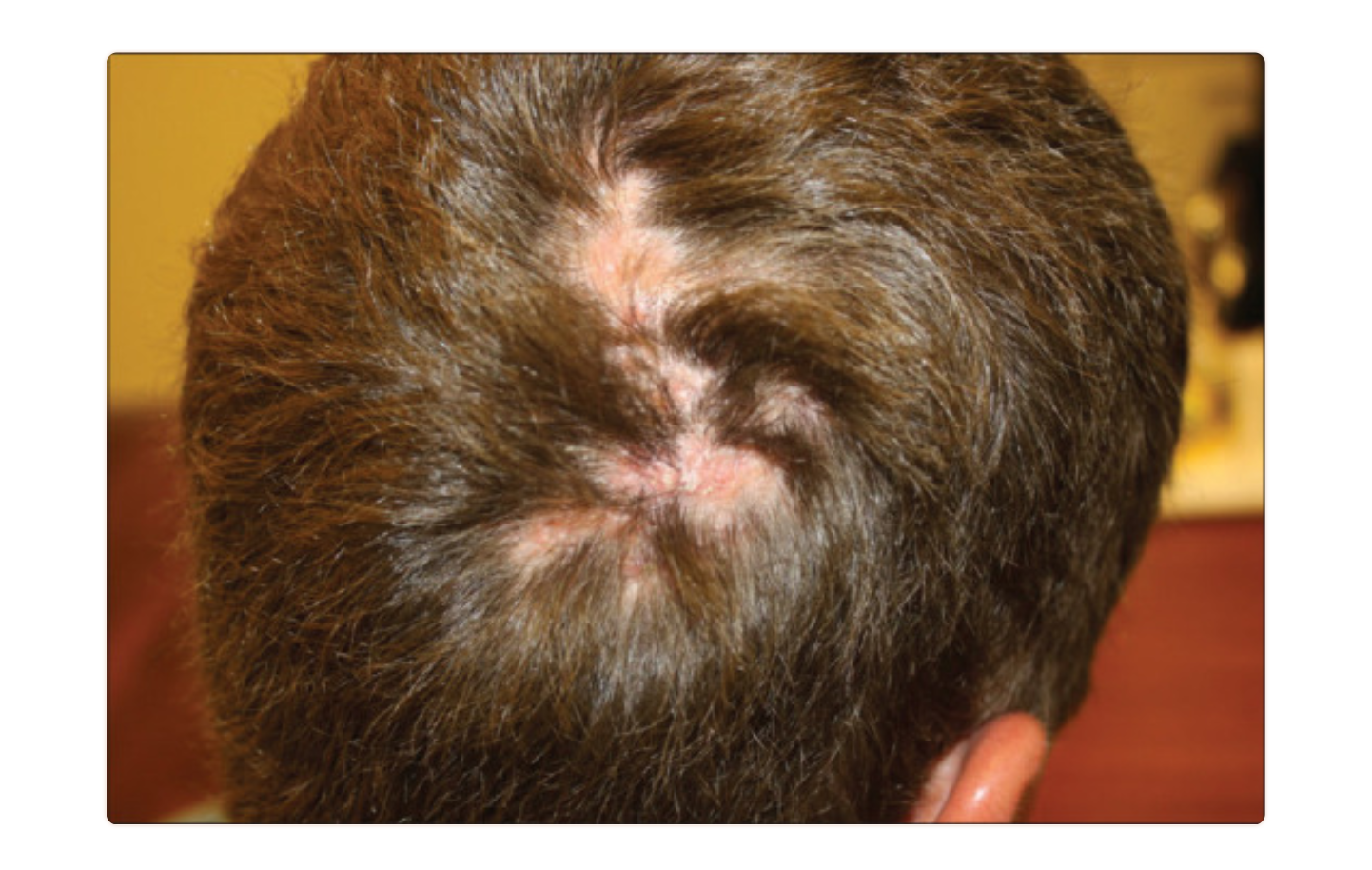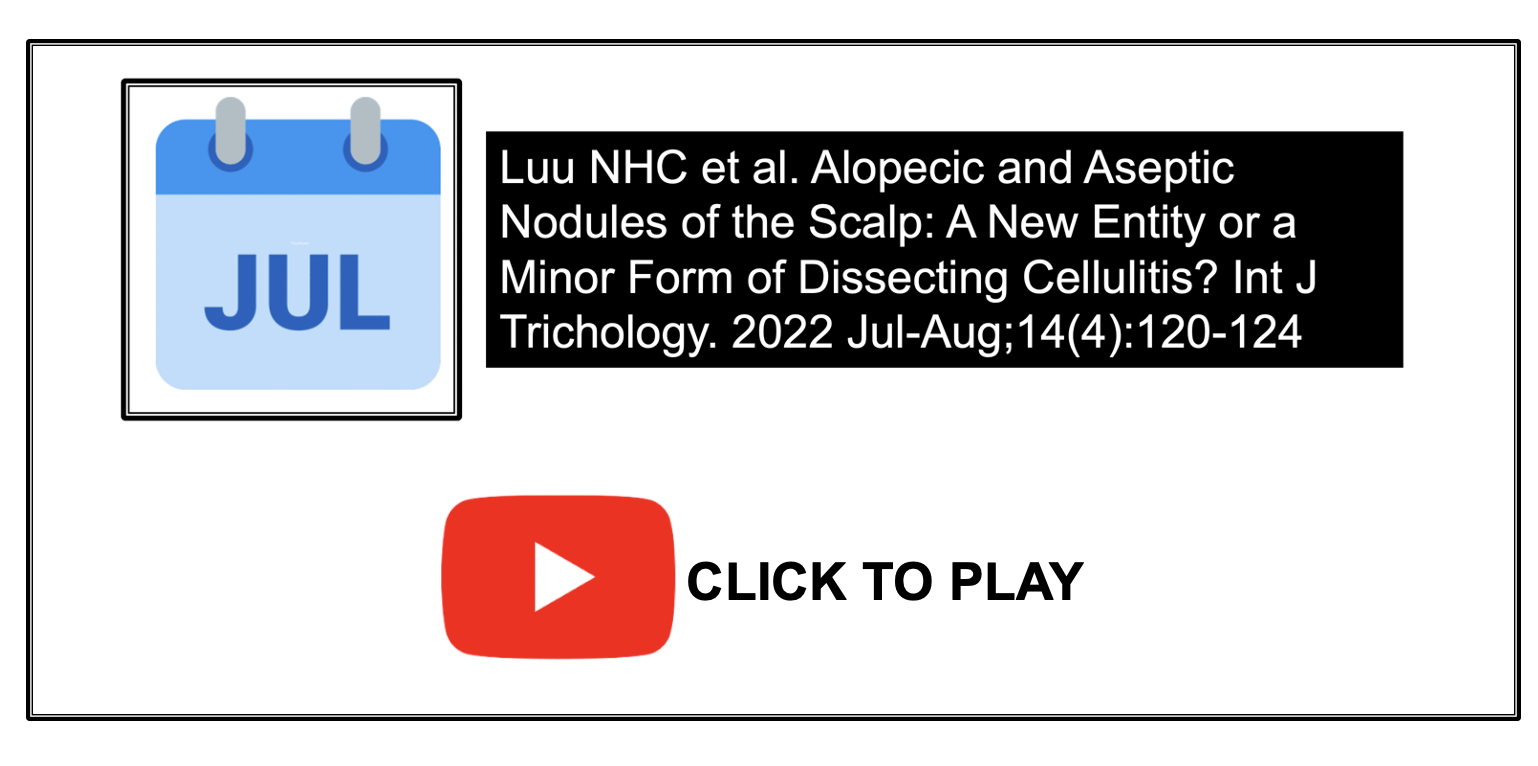Alopecic and Aseptic Nodules of the Scalp (Pseudocysts): A Really Good Prognostic Form of Dissecting Cellulitis?
Alopecic and Aseptic Nodules of the Scalp (AANS)
In 1992, Iwata described in the Japanese literature what appears to be the first report of “scalp pseudocysts” or what later came to be called alopecic and aseptic nodules of the scalp (AANS).
AANS are thought by many to be a type of dissecting cellulitis. They appear identical to dissecting cellulitis in many ways - except that the lesions respond incredibly well to treatment with doxycycline and steroids injections (and rarely other treatments like isotretinoin). Hair regrowth is very common and the course of lesions from start to finish is just a few months. This contrasts with DSC which can be hard to treat and lasts years.
The main location of the nodules in AANS is occipital. Patients have one or just a few nodules. Although the nodules in AANS can discharge pus, cultures of material from the puncture are typically negative. The histopathology showed a deep granulomatous inflammation very similar to DSC.
Picture of alopecic and aseptic nodules of the scalp (AANS). From Luu NHC et al. Alopecic and Aseptic Nodules of the Scalp: A New Entity or a Minor Form of Dissecting Cellulitis? Int J Trichology. 2022 Jul-Aug;14(4):120-124. Used with creative commons license.
Luu NHC et al 2022
Authors of a new study report 26 cases of AANS over 10 years. They described that the majority of patients were male and Caucasian and with the age ranged from 18 to 48 years. The patients responded well to either oral doxycycline or low-dose isotretinoin, associated with intralesional triamcinolone acetonide 20–40 mg/mL, with complete or partial regrowth of hair. Some were also treated with topical antibiotics. The condition seemed obvious to the authors and they did not find it necessary to perform any sort of scalp biopsies.
Discussion
I really liked this report as I enjoy seeing patients with AANS. It seems devastating when patients come in with these lesions. Many think they have classic dissecting cellulitis and have read alot about the challenges of this diagnosis. To be told the lesions are AANS and that with doxycycline and steroid injections these lesions should be done in a few months is incredibly good news. Many patients return for follow up very very happy. It’s a great condition to treat.
It’s therefore important to recognize AANS. Patients have one or two nodules somewhere on the vertex area and they drain pus. Biopsies are not too specific but show a mixed infiltrate in the deep dermis similar to DSC. With a few months of doxycycline and a few visits for steroid injections, the hair is usually all grown back. I often treat with 2 % clindamycin in betamethasone or clobetasol as well just to help these lesions along.
The authors of this study also believe that AANS is a minor form of dissecting cellulitis of the scalp (DCS). I’m of that opinion too. These lesions look like DSC and by trichoscopy they look 100 % identical.
REFERENCE
Luu NHC et al. Alopecic and Aseptic Nodules of the Scalp: A New Entity or a Minor Form of Dissecting Cellulitis? Int J Trichology. 2022 Jul-Aug;14(4):120-124.
Iwata T, Hashimoto T, Niimura M. A pseudocyst with inflammatory granulation tissue on scalp – Pseudocyst of scalp. Jpn J Clin Dermatol. 1992;46:9–16.
This article was written by Dr. Jeff Donovan, a Canadian and US board certified dermatologist specializing exclusively in hair loss.


